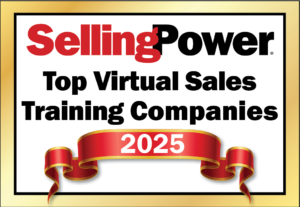Comprehensive Prospecting Strategies

Creating a comprehensive B2B strategy that extends beyond prospecting is essential for sustainable business growth and success. Sales 2.0 expert Richard Lane, co-founder and CCO of durhamlane, the strategic sales and marketing agency, has witnessed a significant transformation in the sales funnel. He argues that the traditional linear path has evolved into a dynamic loop driven by shifts in people’s buying habits.
The Linear Path to the Loop
Thanks to the modern age’s shift in buying patterns escalated by online sales and digital shopping, the B2B sales funnel no longer has a clear beginning and end. In today’s customer-centric era, there are many more entrance and exit points; people become involved and engaged at different stages and these can all run at different times and speeds. Not to mention the huge variety of channels that are also in the mix, which can complicate what was once a logical and linear funnel.
With so many variations, you need to consider at what point you’ve reached the end of the funnel. When does a prospect become a customer? What happens then? How do you grow that customer? This is when the funnel starts again in the other direction – hence, the loop.
The focus shifts to nurturing and growing that relationship indefinitely, and customer retention and expansion become paramount. Providing exceptional customer support and identifying opportunities for upselling and cross-selling keeps the funnel in a continuous loop, allowing you to maximize customer lifetime value and drive sustainable growth.
To do this, you need to implement strategies to foster growth and identify those upselling or cross-selling opportunities. The crucial point is to make sure your team is mobilized to play the right strategic roles at various points along this funnel.
Selling at a Higher Level
A continuous sales funnel means engaging with more people than ever. To be a top sales professional, you must adapt your strategy to engage prospects effectively at every stage. You need to build a plan that involves and engages people from different parts of an organization – probably at C-level. This extends to using your own C-level executives and means leveraging data, personalization, and targeted messaging to connect with prospects on their terms.
I call engaging people across all tiers of an organization “selling at a higher level.” It means tailoring your offerings to address specific needs, adding value, and building trust. It’s centered on customer-centric methodology, employing consultative questioning techniques, and engaging prospects and customers by asking thought-provoking questions to uncover their pain points, aspirations, and desired outcomes.
It all comes down to genuinely listening and understanding their perspective to understand what they need. Whether you’re in sales or marketing, you have to put the customer first.
You can use “selling at a higher level” across a whole sales team or as an individual contributor to remind you to keep the wheel of business development turning and continuing to prospect. It can also ensure you spend your time where you can be most successful, because you’re constantly qualifying discussions and making sure your deals are moving forward. In short, this method provides you with a sales funnel loop.
What’s the secret to the endless sales funnel loop?
To successfully execute a comprehensive sales strategy and effectively navigate the sales funnel loop, collaboration and role alignment are crucial. Sales and marketing experts must work together seamlessly – coordinating their efforts across all parts of the funnel.
People often view sales and marketing as separate entities when, in reality, they should be taking a leaf out of one another’s book. Each team member must play the right strategic role and collaborate in these roles.
Practicing patience, having a customer-first philosophy, and truly prioritizing collaboration to align sales and marketing are all major components to driving business growth, increasing revenue, and delivering a better buyer experience.
By defining clear responsibilities, sharing insights, and communicating effectively, teams can optimize their performance and create a unified customer experience.
Orchestrating success in the sales funnel involves not only managing internal roles but also fostering strategic alignment with customers. Look to understand the goals, challenges, and aspirations of both sides of the sales equation. By aligning your strategy with the needs of your customers, you can tailor your offerings and approach to deliver maximum value. Building a customer-centric strategy establishes trust, strengthens relationships, and increases the likelihood of successful outcomes.
In summary, creating a winning strategy for all parts of the sales funnel requires the ability to reach beyond the traditional client contact and involve C-level executives and other decision-makers in the process.
By understanding their goals, challenges, and vision, sales professionals can align their offerings and value propositions accordingly. This involvement builds strong relationships, ensures buy-in from all stakeholders, and increases the chances of revenue success.
Richard Lane is the co-founder and CCO of durhamlane, a strategic sales and marketing agency behind global B2B brands.
Get our Enewsletter
Get the latest sales leadership insight, strategies, and best practices delivered weekly to your inbox.
Sign up NOW →